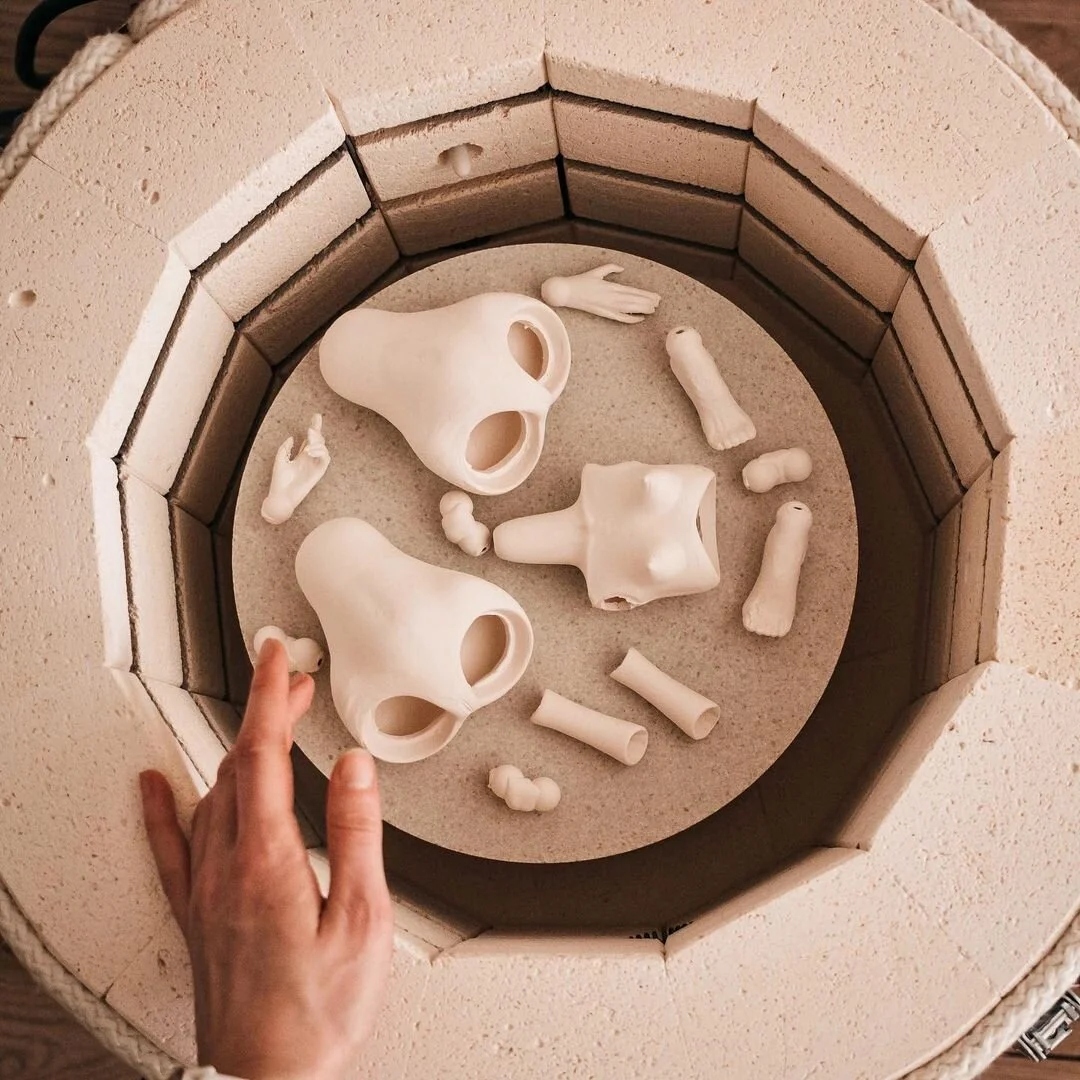Sanding and detailing porcelain after bisque firing
Porcelain is unique material when it comes to sanding, cleaning up the seams and detailing casted pieces. Today I want to talk about just that! This process can be relaxing and fun because there is no dust, just a tub of water and bisque-fired porcelain pieces.
This post contains affiliate links and I will be compensated if you make a purchase after clicking on my links. I wouldn’t promote anything I don’t absolutely love!
What’s bisque-fired porcelain?
A bisque firing or "soft fire" is when uncleaned greenware is fired in low temperatures, depending on the porcelain can be around 850-1000℃. At this point, porcelain is still very porous and brittle, but you can handle it easier than greenware. It still hasn’t reached maturity, so the texture is quite chalky and doesn’t have that prominent porcelain translucency and softness.
The sanding and detailing process
This is when all the sanding and detailing occurs! Porcelain dust can be harmful to your lungs, so the usual sanding is not recommended. Bisque-fired porcelain is not soluble in the water anymore and it’s perfect for wet sanding.
I prepare a large, low-rimmed tub and fill it with water. Cover your desk with a towel to avoid mess. Submerge bisque-fired porcelain pieces and let them soak up the water. You’ll see some bubbling at this point! Now put on some music or a podcast and start working.
Since the bisque-fired porcelain is quite brittle you don’t need very rough sandpaper. I like to use wet sanding sponges, a scalpel for some detailing or cutting excess porcelain and a needle for extra detailed work. Because it’s the last step before final firing, I like to take my time and clean every piece to perfection. Every seam or bump will be visible and impossible to remove after final firing! This process can take days, but the final result is so worth it.
What to do if porcelain piece breaks?
Bisque-fired porcelain is indeed very brittle and you have to handle it with care. Unfortunately breaking very small pieces is quite a frequent occurrence. Toes or fingers suffer most often. If that happens to you, you can try and salvage the piece by adding a very small amount of liquid porcelain and gluing the finger this way. Be extra careful not to form visible seams. This method is not foolproof, sometimes a piece like this can break again in the kiln or warp and bubble when firing in high temperatures.
I hope this information was interesting and helpful. Sanding and cleaning bisque-fired porcelain can be fun and no dust is a plus in my book! Let me know if you have any questions in the comments below. Also, don’t forget to check my BJD sculpting masterclass and subscribe to the newsletter to stay in the loop.






